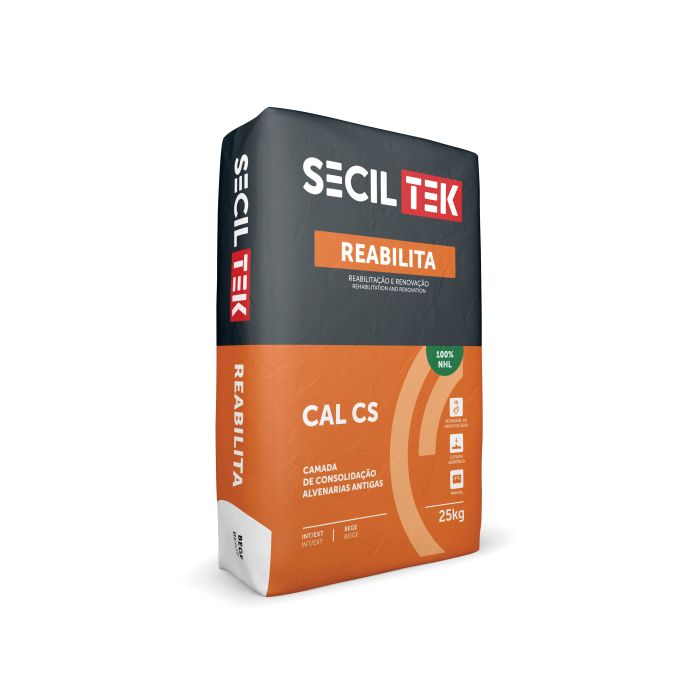Reabilita Cal CS (Consolidation)
This Reabilita Cal CS is a dry mortar, formulated with natural hydraulic lime, criteriously selected siliceous and calcareous aggregates and adjuvants, for the consolidation of old substrates. Its properties of tixotropy, adhesion and durability are particularly adapted to the function it was designed for.
Estimate how much you will need by using our calculator!
Collection
Next Day Pallet
Economy Pallet
Parcel Delivery
This NHL Reabilita Cal CS is a dry mortar, formulated with natural hydraulic lime, criteriously selected siliceous and calcareous aggregates and adjuvants, for the consolidation of old substrates. Its properties of tixotropy, adhesion and durability are particularly adapted to the function it was designed for.
It is used over old masonry surfaces for the application of a rough consolidation layer, namely when the intention is the refurbishing of old building façades. The use of an exclusive natural lime binder, and its special composition, results in an excellent physical-chemical behaviour and mechanical performance in the connection with the different materials that normally constitute this type of substrates.
Preparing the substrate - Start with the complete removal of old renders. After removal, and until the substrate is completely uncovered, proceed with a pressure-controlled water jet wash, trying to minimize the effect on the masonry joints, avoiding removal of the mortar. This operation must be complemented with the brushing of the stone and/or ceramic elements with a wire brush, in order to achieve a fine adhesion surface in these elements.
Preparing the mortar - Ideally it must be mixed in specially recommended equipment with an automatic water dosing system.
Application - After mixing, it must be applied manually in order to fill the cavitiesand any imperfection in the masonry display. This mortar layer is not meant to straighten the substrate, so it admissible to visualize the masonry contours in this place. While this mortar layer remains fresh, proceed with the incorporation of squared fibreglass net with 40x40 mm mesh, with an anti-alkaline treatment, embedding it with the back of the spoon, into the mortar.
If the situation justifies it, proceed with an initial filling of cavities in the masonry with small ceramic fragments covered with Mortar. On smooth concrete subtrates, apply (immediately before the referred rough cast, and adhesion propoter) SecilTEK AD 90.
After this layer has hardened (7 day setting period), proceed to the application of a cladding layer using: NHL Cladding Mortar. Layer must not be executed with thickness above 2.5 cm and below 1 cm.
Once there are specific situations in the rehabilitation work, we recommend consultation with our Technical Services team, prior to material selection.
Restrictions - The Mortar must not be applied at ambient temperatures below 5 ºC and above 30ºC. In dry weather or under exposure to strong winds, proceed with the watering of the executed surfaces for a week, in order to keep the mortar permanantly moistened.
Additional advice - The mixing water must be free of any impurities (clay, organic material), preferably potable
water; No mortar should be applied after its setting and drying process has initiated. No water should be added to soften the mortar.
Do not add any other product to the mortar. The Mortar must be applied exactly how it is presented in its original package.
Suitable For
- For the consolidation and stabilization of old friable substrates and regulation of water absorption before the application of a new coating.
Coverage Rate
- 4.5m2 at 3mm per 25kg bag
25kg Bag

